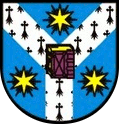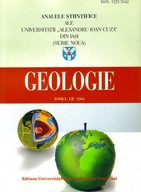
English title
- SERIA
GEOLOGIE (AUI-G) - |

|
| Log in New account |
| Home | Main Page | Guide for Authors | Peer Review | New Articles | Events | Archive | Index | Contact us |

|
Article THE RAMAN STUDY ON CERTAIN SULFATES
NICOLAE BUZGAR - „Al.I.Cuza” University of Iaşi, Romania, Department of Geology ANDREI BUZATU - „Al.I.Cuza” University of Iaşi, Romania, Department of Geology IOAN VASILE SANISLAV - James Cook University, Townsville, Australia, School of Earth and Environmental Sciences View abstract as pdf file | View full article as pdf file Abstract: Some of the most common sulfates have been investigated by non-contact Raman spectrography. For barite and anhydrite group the vibrational mode ν1 decreseas as the atomic mass increseas.The Raman spectrum of chalcocyanite shows two strong bands at 1013 cm-1 and 1045 cm-1 interpreted as ν1 modes. The bands at 423 cm-1, 448 cm-1, 480 cm-1 and 514 cm-1 have been assigned to the ν2 sulfate mode, the bands at 1101 cm-1 and 1205 cm-1 to the ν3 vibrational modes and the bands at 622 cm-1 and 670 cm-1 to the ν4 mode of SO4. The bands at 250 cm-1, 269 cm-1 and 347 cm-1 have been interpreted as vibrations of Cu-O bonds. Szmikite shows intense vibrations at 1021 cm-1 interpreted as ν1 mode of SO4. The ν2 and ν3 modes the bands are at 425 cm-1 and 493 cm-1 respectively 1089 cm-1 and 1189 cm-1. The bands at 623 cm-1 and 654 cm-1 were assigned to the ν4 mode. The translational mode T(H2O, Mn) was determined at 263 cm-1. Keywords: Raman spectra, sulfates, chalcocyanite, szmikite |
copyright © 2024 Department of Geology |